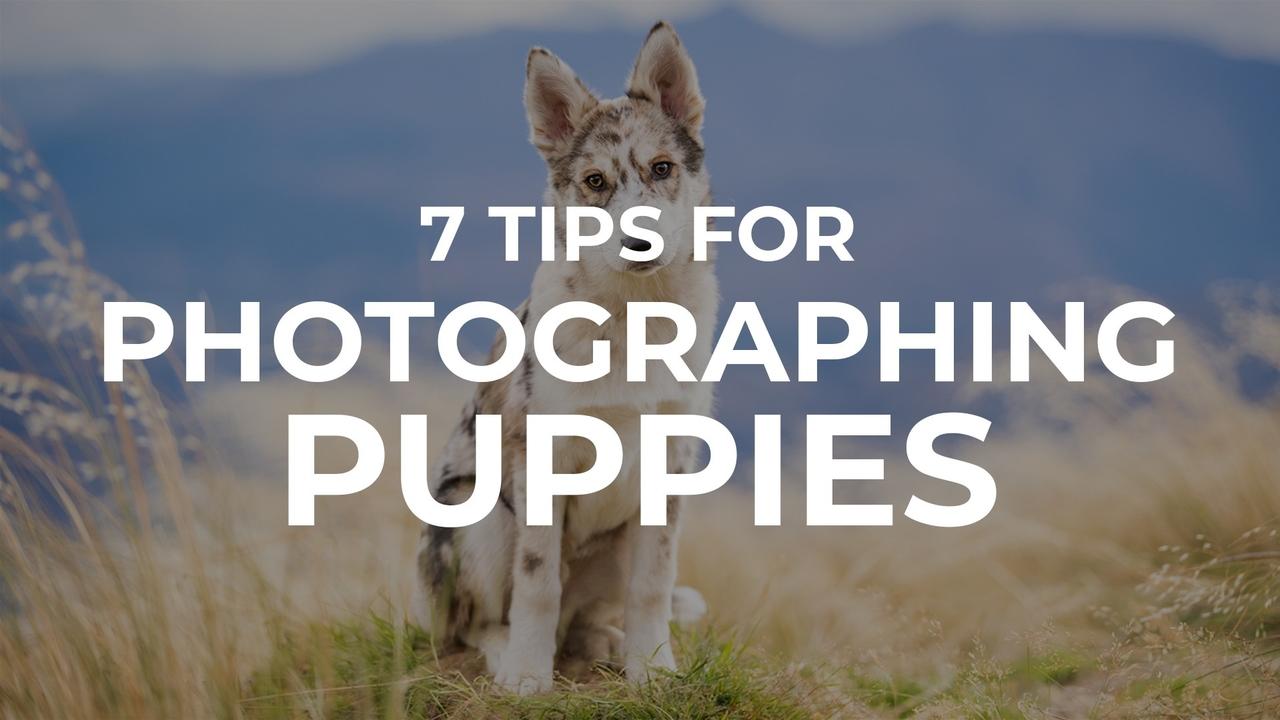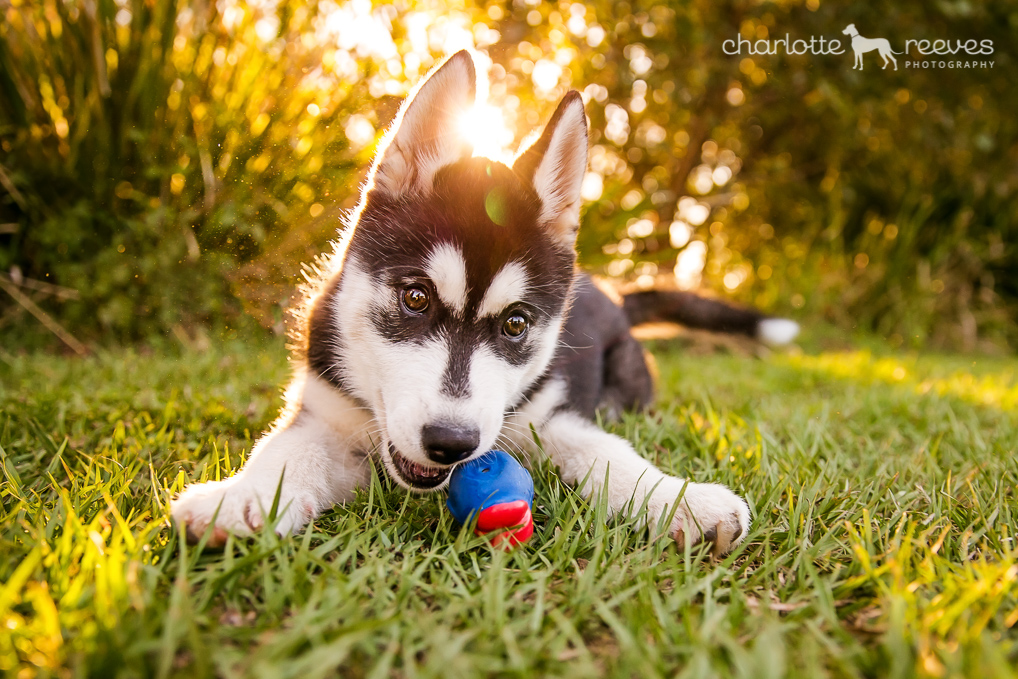7 Tips for Photographing Puppies
Mar 15, 2017
By Charlotte Reeves
Downy soft fur, needle sharp teeth, little waggly tails and puppy breath… is there anything more adorable than a puppy? As tricky as it can be to obtain great images of dogs, capturing awesome shots of puppies is often even more challenging.
Here are my top 7 tips to help you when photographing puppies!
1. Manage their energy
While it may seem that puppies have boundless energy and are always on the go, the younger they are, the more time they need to rest, recuperate and grow! If you’re wanting to capture action, keep in mind that they may tire more quickly than fully grown dogs and be prepared for them to crash fairly quickly afterwards, allowing you opportunities for sleeping and relaxed shots where you can focus in on little details instead.
 Canon EOS 1D X, Canon EF 135mm f/2L, ISO 2000, 1/160 sec, f/2
Canon EOS 1D X, Canon EF 135mm f/2L, ISO 2000, 1/160 sec, f/2
2. Attention, please!
Being super curious about the world around them can make it easy to capture a puppy’s attention with a high pitched squeak, whistle or other sound they haven’t heard before. Be prepared to capture the shot quickly though – as their attention span is often quite short and they’ll soon become desensitised to new sounds once they’ve worked them out.
Along with a good repertoire of sounds you can make yourself, have some “noise makers” on hand too – squeaky toys, whistles, game callers and the even musical noisemakers such as harmonicas.
Give them frequent breaks. Puppies are often a lot smarter than we give them credit for. They may quickly work out that it’s you making these noises and lose interest entirely in anything you have to entertain them.

Canon EOS 1D X, Canon EF 24-70mm f/2.8L II @ 70mm, ISO 800, 1/640 sec, f/2.8
3. Level with them
Shooting from their level is a good general rule for photographing pets and is even more important with puppies. Levelling with them helps recreate their view of the world. With limited obedience and restraint however, getting down on their level can often result in being mobbed with puppy licks and play, making it hard to get any distance between you and them.
An alternative is to raise them up a little on something, creating a barrier but allowing you to get close. Asking a helper to hold them can be beneficial in these situations, or you can use baskets or boxes to help contain their movements.
 Canon EOS 1D X, Canon EF 70-200mm f/2.8L IS II @ 135mm, ISO 500, 1/640 sec, f/3.2
Canon EOS 1D X, Canon EF 70-200mm f/2.8L IS II @ 135mm, ISO 500, 1/640 sec, f/3.2
4. Freeze the action
Puppies move quickly and randomly, often resulting in blurry images if you don't have the shutter speed high enough. To help keep the action sharp, there’s a few things you can do. Using a fast shutter speed is essential, so setting the camera to manual exposure or shutter-speed priority with a minimum of 1/500 sec when photographing them will help freeze any movements they make. If they are running around go higher - I recommend a minimum of 1/1000 second for action. Choosing an environment with lots of light – such as open shade or late afternoon sunshine – will help greatly. Try to steer clear of shooting indoors, as generally the light will be much dimmer.
 Canon EOS 1D X, Canon EF 70-200mm f/2.8L IS II @ 80mm, ISO 2500, 1/640 sec, f/2.8
Canon EOS 1D X, Canon EF 70-200mm f/2.8L IS II @ 80mm, ISO 2500, 1/640 sec, f/2.8
5. Be a quiet observer
The beauty of puppies and other young animals is in how they explore the world around them, learning with every new thing they discover. It can be so rewarding just sitting back and watching their curiosity in their surroundings unfold, as they delight in new experiences and objects in their world. Be ready with your camera to capture these serendipitous moments as they occur.
 Canon EOS 1D X, Canon EF 70-200mm f/2.8L @ 120mm, ISO 500, 1/1000 sec, f/2.8
Canon EOS 1D X, Canon EF 70-200mm f/2.8L @ 120mm, ISO 500, 1/1000 sec, f/2.8
6. Those little details
Those oversized ears and paws, soft downy fur and folds of excess skin won’t be around forever, so make a point of recording those physical features before they grow up. Waiting until the puppy is tired and still, or even asleep, will make it easier to frame your shot with the desired feature as the main focus.
 Canon EOS 5D Mark II, Canon EF 35mm f/1.4L, ISO 500, 1/500 sec, f/2
Canon EOS 5D Mark II, Canon EF 35mm f/1.4L, ISO 500, 1/500 sec, f/2
7. Take what you can get
Photographing puppies is certainly challenging. The experience they have with you has the potential to set the tone for future photographic adventures throughout their life. Keeping happy and upbeat and making the experience a positive one for them should be more important than getting the perfect shot you envisaged, so know when to call it a day and move on.
 Canon EOS 1D X, Canon EF 24-70mm f/2.8L II @ 24mm, ISO 640, 1/640 sec, f/2.8
Canon EOS 1D X, Canon EF 24-70mm f/2.8L II @ 24mm, ISO 640, 1/640 sec, f/2.8
Start your pet photography journey with 100 free daily tips!
That's over 3 months worth of daily tips covering topics like working with light, obtaining expression, camera settings, shooting action, composition, using the location, dog handling tricks – and so much more. Delivered direct to your inbox so you can read and absorb straight away (no homework required).
We hate SPAM. We will never sell your information, for any reason.

